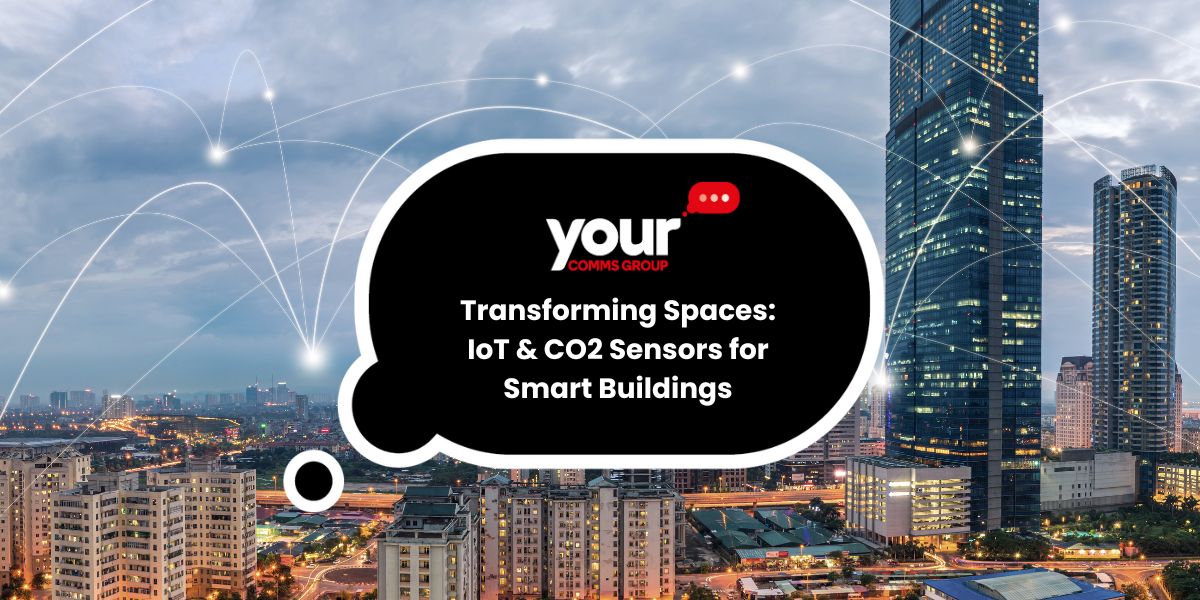Revolutionising Manufacturing with Smart Sensors
It is incredible how smart sensors have helped many industries create an efficient working environment. Recent studies show that the market for smart...
2 min read
Your Comms Group : Jun 20, 2024 3:00:00 PM

Smart sensors have been present for quite a while now. As the number of Internet of Things (IoT) devices grows significantly, so do these sensors. In today's world, smart sensors are used almost everywhere. If you are using motion sensors to keep your office secure or an AC that can turn off automatically when there are no occupants in the room, then you are already familiar with using smart sensors as well.
These tiny devices can help you track almost everything, from temperature, light levels, carbon dioxide (CO2) concentrations, or even movement. And the best part? Many of them have battery lives that can last up to 10 years!
This article will explain how these smart sensors work, focusing on their role in monitoring heat, light, CO2, and movement.

Heat sensors measure temperature readings with electrical signals. They help maintain comfortable indoor temperatures in climate control systems and ensure machinery operates within safe temperature ranges in industrial processes.
How Do Heat Sensors Work?
Heat monitoring sensors, such as thermocouples and infrared sensors, detect temperature changes. A thermocouple can generate a small voltage when the temperature between its two metals differs. Infrared sensors, on the other hand, detect the infrared radiation emitted by objects, which increases with temperature.

Light sensors are photodetectors or photosensors that detect light to measure illuminance and respond to changes in the amount of light received. Their components can be used in light sensing features in mobile devices, automatic outdoor lighting, and proximity sensors.
How Do Light Sensors Work?
Light sensors, like photodiodes and phototransistors, measure the intensity of light. Photodiodes convert light into an electrical current, while phototransistors amplify this current. In both cases, the movement of electrons generates an electrical current, which the light sensors detect and measure.
Measuring carbon dioxide (CO2) is crucial for many applications, including environmental monitoring, medical procedures, and various industries such as food and refrigeration. Non-dispersive infrared (NDIR) sensors are the most common for CO2 measurement due to their high accuracy and wide range, up to 100% volume.
How Do CO2 Sensors Work?
NDIR sensors measure CO2 levels in the air by shining infrared light through a sample of air and measuring how much light is absorbed by CO2 molecules. In office buildings, CO2 sensors help maintain air quality by triggering ventilation systems when CO2 levels rise, improving comfort for the room occupants.
Movement sensors are standard in security systems, automation, and healthcare. In security, they detect unauthorised movement. In automation, they enable hands-free device operation. In healthcare, they monitor patient movements to ensure safety.
How Do Movement Sensors Work?
There are two types of movement sensors: accelerometers and passive infrared (PIR) sensors. Accelerometers detect changes in motion and orientation by measuring acceleration forces, while PIR sensors detect infrared radiation emitted by humans or other moving objects.
Smart sensors achieve a 10-year battery life through energy-efficient designs and low-power technologies by leveraging advanced microcontrollers that consume minimal power. They are designed to enter sleep mode when not monitoring, waking only to take measurements and transmit data, reducing power consumption significantly.
Modern batteries, like lithium-ion, with high energy densities and long life spans, enable these sensors to operate for up to 10 years without needing replacement. This extended battery life will reduce the need for frequent maintenance, lowering costs and making smart sensors ideal for remote or hard-to-reach locations.
Conclusion
Explore the technology behind smart sensors to find the one that perfectly fits your business needs. If you ever need assistance choosing an IoT Business Solution, including smart sensors, Your Comms Group is only one call away.

It is incredible how smart sensors have helped many industries create an efficient working environment. Recent studies show that the market for smart...

In an age where the focus on sustainability and health within our living and working environments is paramount, the role of IoT-integrated CO2...

Have you ever felt life became more convenient and efficient? This can be attributed to technological innovations transforming our ways of doing...